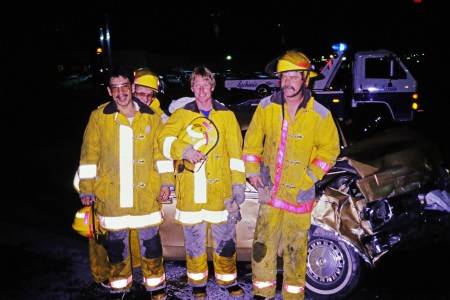EYE INJURIES
ALL LEVELS:
1. Lacerations on or near the eyelid or eye:
a. Do not apply pressure to the eyeball.
b. Cover BOTH eyes with a loose dressing.
c. Preserve avulsed parts in a clean plastic bag. Use moist gauze.
2. Foreign bodies:
a. Non-impaled: Cover BOTH eyes with loose dressing.
b. Impaled: DO NOT REMOVE - stabilize with a paper cup and bulky dressing (donut) if available. Protect otherwise. Cover unaffected eye.
3. Avulsed eye:
a. Cover with sterile moist dressings; use sterile saline, Ringer’s Lactate, or sterile water. Cover unaffected eye.
1. Chemical burns:
a. Irrigate copiously with tap water, saline, or Ringer’s Lactate as soon as possible, minimum of 2L.
PARAMEDIC:
1. Consider application of cardiac monitor due to potential involvement of cranial nerves with deep penetrating eye trauma. Treat lethal dysrhythmias concurrently.
2. Consider Pain Management Guidelines
ALL LEVELS:
1. Lacerations on or near the eyelid or eye:
a. Do not apply pressure to the eyeball.
b. Cover BOTH eyes with a loose dressing.
c. Preserve avulsed parts in a clean plastic bag. Use moist gauze.
2. Foreign bodies:
a. Non-impaled: Cover BOTH eyes with loose dressing.
b. Impaled: DO NOT REMOVE - stabilize with a paper cup and bulky dressing (donut) if available. Protect otherwise. Cover unaffected eye.
3. Avulsed eye:
a. Cover with sterile moist dressings; use sterile saline, Ringer’s Lactate, or sterile water. Cover unaffected eye.
1. Chemical burns:
a. Irrigate copiously with tap water, saline, or Ringer’s Lactate as soon as possible, minimum of 2L.
PARAMEDIC:
1. Consider application of cardiac monitor due to potential involvement of cranial nerves with deep penetrating eye trauma. Treat lethal dysrhythmias concurrently.
2. Consider Pain Management Guidelines
